Fila brasileiro: breed description and cultivation

Human-dog interaction and friendship has a long history. Each breed has unique characteristics and skills, in the light of which four-legged pets are appreciated by breeders. Fila Brasileiro is a breed that combines excellent protective qualities, intelligence and an attractive exterior, thanks to which for several centuries it has been happily living side by side with humans.
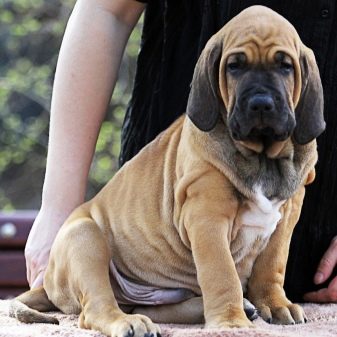
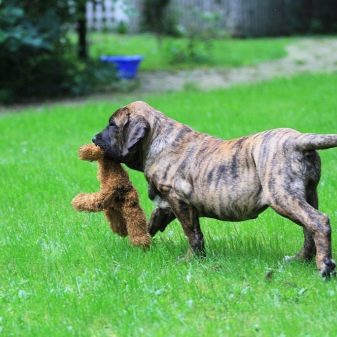
Origin story
The beginning in the development and formation of the Brazilian Mastiff dog breed is considered to be the 15th century. The name that these animals later received indicates that Brazil is considered the birthplace of tetrapods. The discoverers who came to this land brought with them dogs of different breeds. Among them were mastiffs and bulldogs, necessary for the protection of settlements. In addition, in the colony, slaves were used as labor, who also needed protection.
The brought animals with such functions did not always cope, but over time newly arrived dogs were naturally bred with local dogs, which led to the appearance of the progenitors of the fila brasileiro.
According to some cynologists, modern representatives of this breed inherited genetic characteristics not only from the bulldog and mastiff, but also from the dog Gonk.
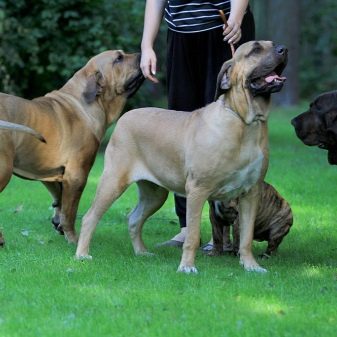

If initially the emergence of the breed of guard dogs took place without direct human intervention, then later the owners of the animals made a strict selection among the dogs, in addition, linear crosses between dogs began to be carried out to consolidate the characteristic features in the exterior and behavior.
Gradually, at the hacienda, a kind of herdbook began to be kept, in which the dogs used as guards were registered. The origin of the name of the breed is due to this primary function, since "fila" in Portuguese means "to escort".
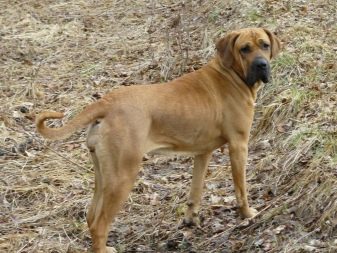

The year 1938 is considered the official starting point for the birth of the breed, when the first Congress of Brazilian Mastiff Breeders took place in Rio de Janeiro. At that time, there were two types of dogs of this breed:
- dogs that stand out for their height and underdeveloped chest;
- animals are shorter, but with a pronounced chest.
To unite all representatives of the fila brasileiro, it was decided to breed the animal, which will have average exterior features. The result of the work of Brazilian dog handlers was the emergence of animals with a stable appearance, therefore, in 1946, a single standard for the Brazilian Mastiff was approved, as well as a single herd book, where all data on dogs of this breed were subsequently entered.
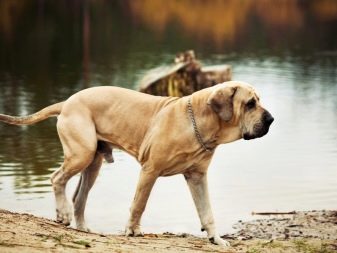
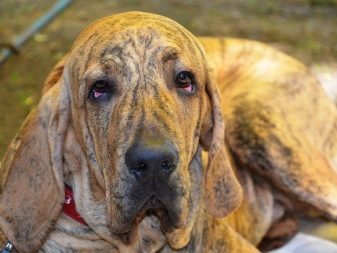
Recognition of the FCI took place in 1960, to this day, dogs are considered the pride of Brazil, however, some character traits, in particular, a low threshold of aggressiveness, led to a ban on keeping such animals in a number of European countries without special permission.
Today, Brazilian mastiffs are actively used as guards, in addition, dogs are involved in search activities. In addition, the animals have not lost their hunting instincts inherited from their ancestors, therefore they are in demand for hunting large animals.
They also acquire mastiffs as a reliable companion and loyal protector for keeping in families.
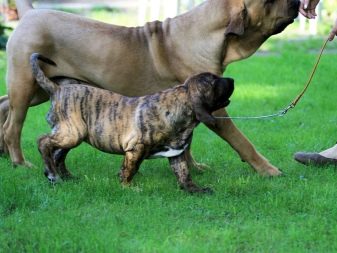
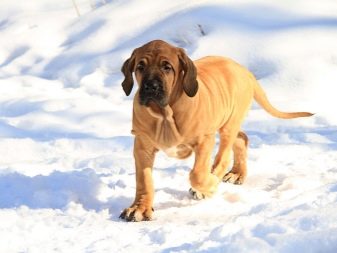
Features of the breed
The defining moment in the exterior of the Fila Brasileiro is the inheritance of the external characteristics of the animal from such pedigree ancestors as the Mastiff and Bloodhound. In particular, from the first breed, the dogs adopted the features of the structure of the body, when the head of the animals will have pronounced features of the second ancestor. The first sign of the breed is the massiveness of the dogs, regardless of gender. In the description of Brazilian dogs, it is indicated that males can have a height in the range of 65-75 centimeters at the withers, while for bitches, norms in the range from 60 to 70 centimeters are considered permissible. However, there are frequent cases when males of the Brazilian Mastiff reach 80 cm in height.
The mass of an adult animal will be at least 50 kilograms; the muscles of the dogs are well developed. The tail in dogs is long, cannot be docked, carried low, at the end it should be slightly narrowed. The head of the animal, even in the light of its massiveness relative to the proportions of the body, should not stand out. The shape of the skull is pear-shaped. In comparison with other mastiffs, the muzzle of the Brazilian variety will be slightly elongated, but it should not clearly protrude onto the border of the skull.
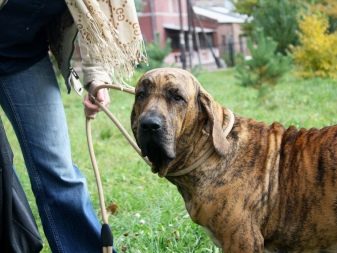
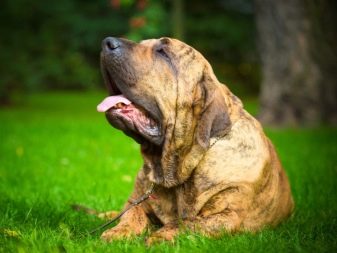
Another feature of the breed is the skin. It will be dense everywhere, but hanging freely, to a greater extent this is manifested in the neck area. So, in dogs, a dewlap is formed from skin folds, which will go to the thoracic region and abdomen. Fila brosileiro belongs to short-haired dogs, however, the cover is distinguished by its density.
There are certain requirements for color. So, dogs can be with wool of any color, but only in a monochromatic version. The following are invalid:
- White;
- mouse;
- blue.
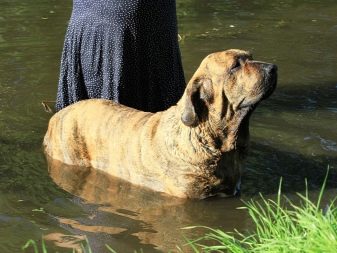
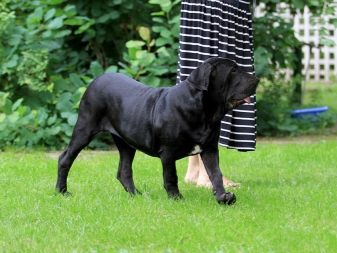
There are mastiffs with a brindle coat color, while the stripes can be both light and dark. In dogs, a mask of a dark shade may be present on the face.
Dogs stand out for their good health and stamina, but they can suffer from some of the diseases common to large four-legged pets. Among them, it is worth highlighting:
- volvulus;
- ailments related to the musculoskeletal system;
- dysplasia of the joints.
With proper care, the life expectancy of mastiffs is 10-12 years.
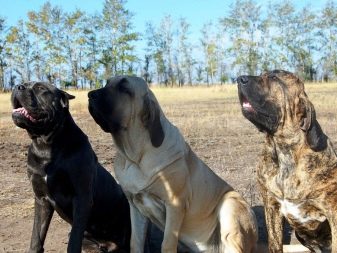

Character and behavior
The main feature of the Brazilian large dogs is their character. It is this trait of the animal that has determined the fame of the pet. According to the owners of fila brasileiro about the peculiarities of the disposition of four-legged pets, it is difficult to make an unambiguous description. However, the unifying quality for all is the highly developed instincts of the guard. In addition, the breed is distinguished as one of the most aggressive towards humans. That is why not everyone is recommended to have a large pet. It is more correct that the owner already has some experience of keeping large animals, as well as possessing training skills. If the puppy is properly trained and educated from an early age, then the breeder of the Brazilian giant will acquire a first-class guard and protector. In inexperienced hands, the dog will become uncontrollable, which is fraught with serious problems in the future.
Dogs are positioned as loyal companions and companions, so pets in the family will definitely establish close relationships with all the inhabitants. However, in addition to loyalty, animals are distinguished by such a character trait as independence. Difficulties can arise after the arrival of a new family member, especially a newborn. The dog will establish good contact with the child only when the Brazilian Mastiff appears in the family after the birth of the baby. It is not worth expecting that the dog will obey the commands of the child, since for a pet of this breed all children will be lower in the hierarchical ladder in the family circle.
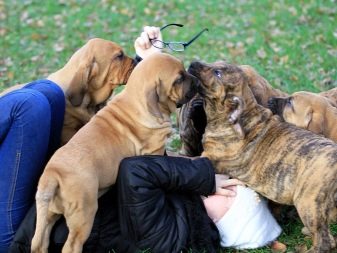

Fila brasileiro have a pronounced suspicion of strangers. In order to avoid aggression on the part of the animal, it is better for strangers not to make tactile contact with the dog immediately, as it may regard this as a threat. Socializing early will help you avoid developing this kind of suspicion towards people. Mastiffs will always be on the alert, so pets will be excellent watchmen and guards for humans in the house. Dogs are practically devoid of a sense of fear, therefore, when protecting their family members, the instinct of self-preservation fades into the background.
In relation to other dogs, the level of aggression in mastiffs is somewhat lower, but they will retain dominance in any case. Breeders are advised to keep one animal. Or try to acquire animals at the same time, so that the Fila perceives them initially as members of his family. Prospective breeders should be aware that a dog will bark at anything that it considers suspicious. Therefore, in terms of neighborhood, dogs are positioned as noisy, in addition, animals are unlikely to suit clean owners, since the pet always saliva flows.

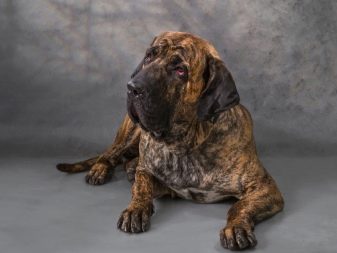
How to choose a puppy?
The first priority when buying a Brazilian Mastiff is to get to know the puppy's parents. It is important to find out information regarding the disposition of animals, as well as familiarize yourself with their pedigree.
It is important that the mother and father are purebred, a different cross in genes can further cause mental disorders in the dog. When choosing a puppy, it is recommended to pay attention to the following points:
- paperwork for a pet;
- the presence of a stigma in the genital area;
- vaccination card.


The optimal age of the animal for weaning from parents will be 1.5-2 months. When buying, you should evaluate the dog - the pet should not be exhausted or, on the contrary, overfed. And also it is necessary to pay attention to the exterior of the dog. Phil's head should be proportional to the body, the bridge of the nose is elongated, the nose has large nostrils. Even small mastiffs already stand out for their powerful build, outstanding breasts.
It is also recommended to examine the limbs of the animal. The paws should be straight, the toes are well developed, so they fit snugly together.As for the hocks of the hind legs, they will look like a deployed angle.
It is worth observing the behavior of the animal. Even a puppy, a dog of this breed should not be intimidated, it is good if the pet reacts to a potential owner at the first meeting by growling or barking.
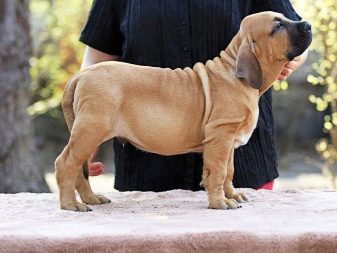
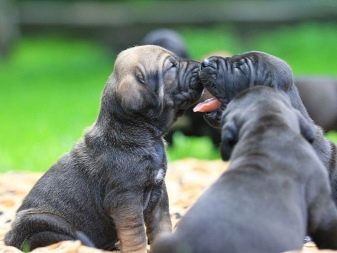
Conditions for keeping
Despite their size, Brazilian Mastiffs are very active animals, so daily walks with a pet are an obligatory part of keeping a large dog. The minimum time that the animal will spend in the fresh air will be 1 hour. It is best to purchase a mastiff for keeping in a private house, so that the dog has its own territory for patrolling. In the apartment, such a dog will be quite cramped.
In terms of grooming, the breed does not require any complex activities. The dog will be satisfied with regular brushing, cleaning of the ears and folds on the body, which usually accumulate dirt.
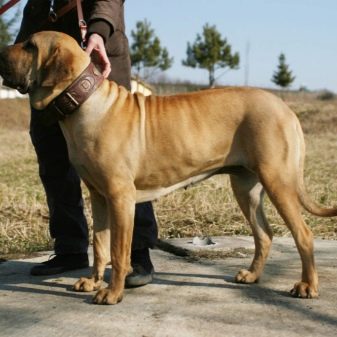
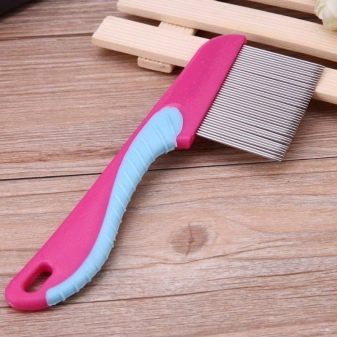
The puppy should be taught to hygiene immediately after purchase, since an adult dog cannot be cleaned of dirt if he does not want to. Animals often shed, so the wool in the aviary or dwelling will have to be cleaned regularly. The dog should be bathed every six months, as well as regular treatments for external and internal parasites.
It is recommended to build a fenced enclosure with a booth in the yard for the dog., but it is forbidden to keep the fila brasileiro locked up at all times, as the dog may become too aggressive. In addition, pets need human interaction. It is necessary to walk a large dog not only on a leash, the animal requires physical activity. It is more correct to conduct classes in specially designated areas.
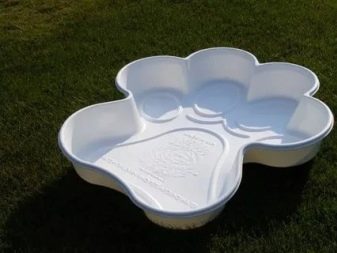
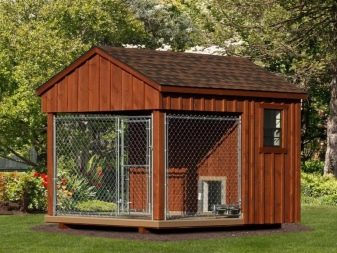
Feeding
In the process of choosing and purchasing a puppy, you must definitely ask the breeder about the dog's diet. In the future, it is recommended to follow the already compiled menu, you should not change the pet's diet dramatically, as this can cause disorders of the digestive system. As practice shows, it is best to feed the Brazilian Mastiff with dry industrial food. The premium class will become suitable in terms of its chemical composition, the availability of essential minerals and vitamins. Liquid stool will indicate that the chosen food option is not suitable for the animal.
Dogs aged 1.5 to 3 months are fed at least 5 times a day, after 6 months the number of feedings is reduced to 3, an adult dog can be fed 2 times - in the morning and in the evening. In the heat, mastiffs may refuse to eat; during this period, one meal per day will be enough for them.
Overfeeding should be avoided when feeding dogs. Water should always be in the animal's bowl.
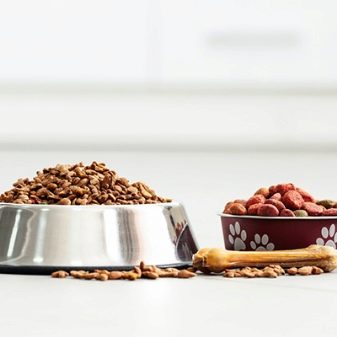
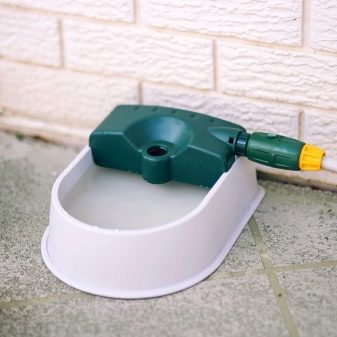
Education and training
Given that the Brazilian large dogs are quite complex in nature, learning and training can be fraught with difficulties. Most of the dogs of this breed are quite stubborn. In the process of upbringing, it is important to immediately make it clear to the dog who is in charge in the family. Training will require a lot of effort from the owner, so you can invite a professional to help.
With knowledge of the characteristics of the breed, as well as timely and regular training, the dog will demonstrate excellent results. Fila brasileiro is an animal with a developed intellect, so during the training it will be quite smart.
Any manifestation of rudeness and physical violence is considered prohibited during training. Mastiffs are very touchy.
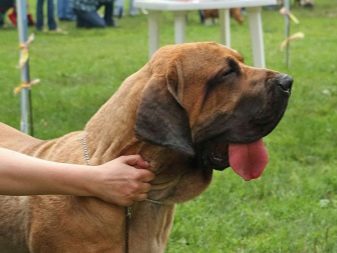
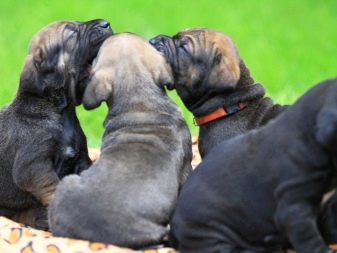
In the next video you will find more information about Fila Brasileiro dogs.






































